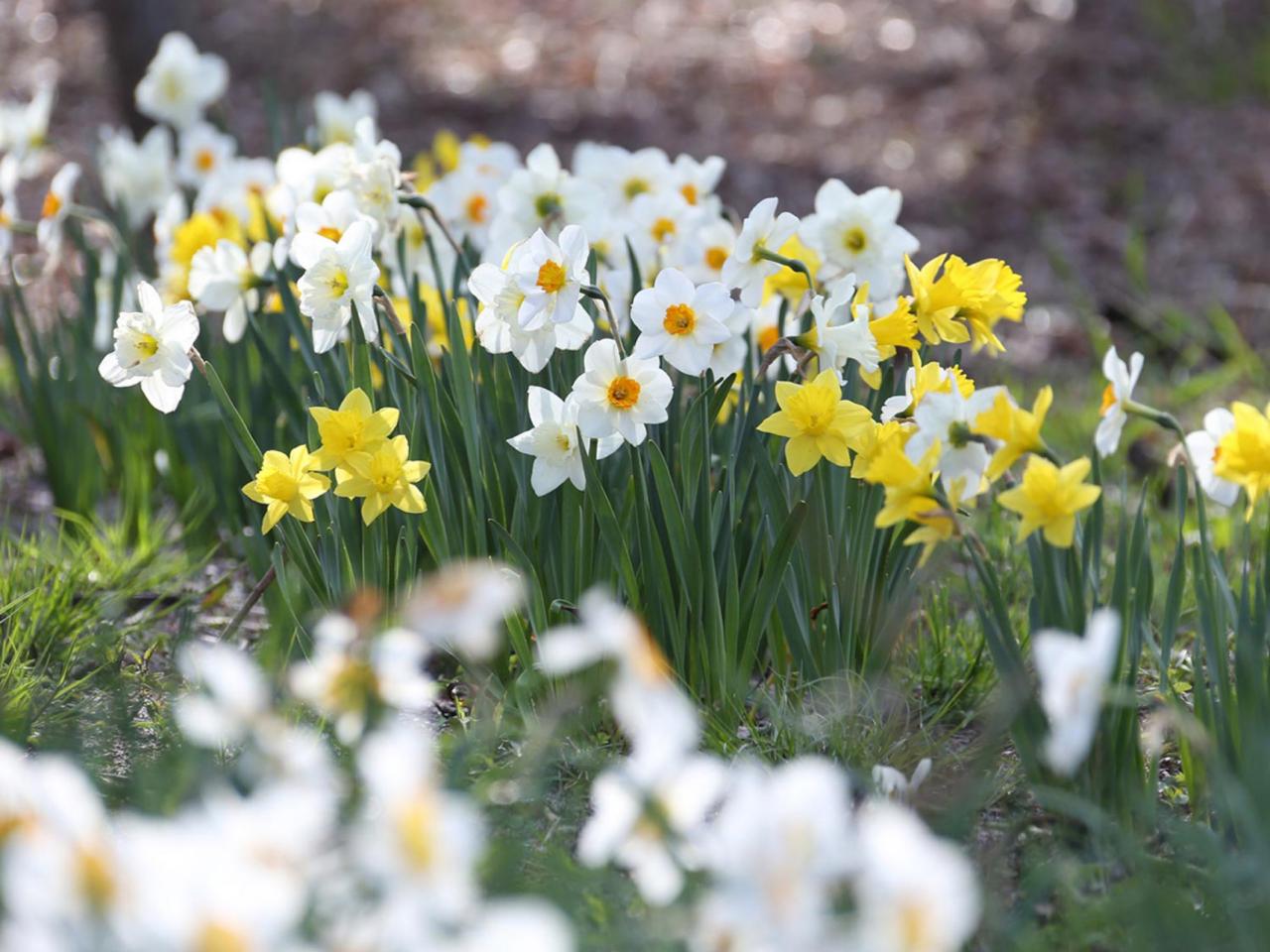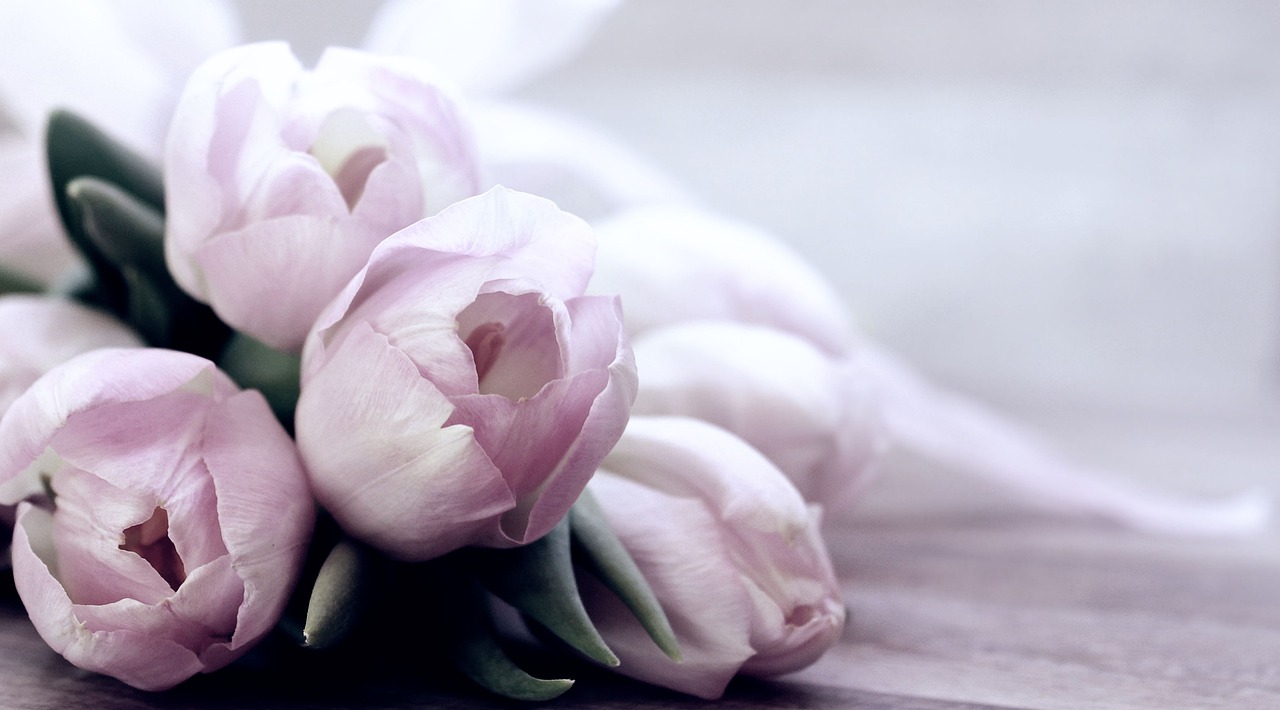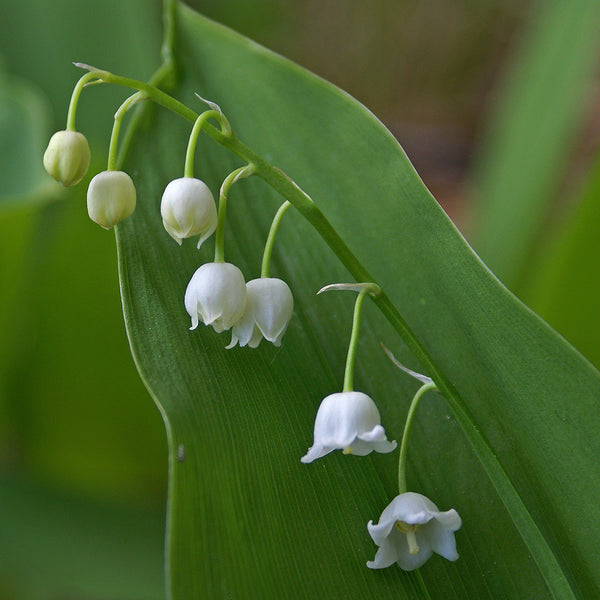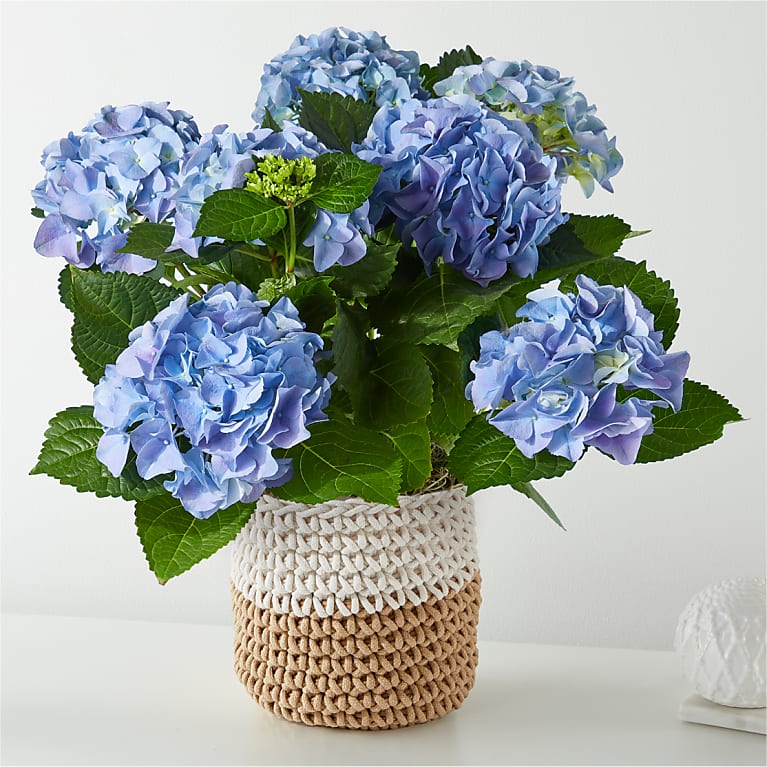The start of a new year, a new season, or any big life event is the perfect time to give someone flowers that signify new beginnings. Certain blooms have traditionally been associated with fresh starts, hope, and optimism for the future. Here are some of the top flowers that make thoughtful gifts to commemorate new beginnings.

The Symbolism of Flowers that Mean New Beginnings
The symbolism of flowers varies across cultures and time periods, but there are some common themes associated with flowers that represent new beginnings. These include:
Hope
Flowers have long been used to convey emotions and messages, with each type of flower having its own unique meaning. One of the most powerful and uplifting messages that flowers can convey is that of new beginnings. These flowers symbolize hope, optimism, and the potential for growth and renewal. They remind us that even in the darkest of times, there is always the possibility for a fresh start and a brighter future.
One of the most well-known flowers that represent new beginnings is the daffodil. This bright and cheerful flower blooms in early spring, often signaling the end of winter and the beginning of a new season. Its vibrant yellow color is associated with happiness and joy, while its trumpet-like shape symbolizes new life and new beginnings. Daffodils are also known for their resilience, as they are one of the first flowers to bloom after a harsh winter, reminding us that even after difficult times, there is always the potential for growth and renewal.
Another flower that represents new beginnings is the cherry blossom. These delicate pink flowers are a symbol of spring and are often associated with new beginnings and the fleeting nature of life. In Japanese culture, the cherry blossom is seen as a reminder to appreciate the beauty of the present moment and to embrace change and new beginnings. The short blooming period of these flowers serves as a reminder that life is precious and should be cherished.
The lotus flower is another powerful symbol of new beginnings. This flower grows in muddy waters, but emerges from the depths to bloom into a beautiful and pure flower. In many cultures, the lotus is seen as a symbol of spiritual enlightenment and rebirth. It reminds us that even in the darkest and most difficult of circumstances, there is always the potential for growth and transformation.
The sunflower is also often associated with new beginnings. Its bright and sunny appearance represents positivity and optimism for the future. Sunflowers also follow the movement of the sun, always facing towards the light. This can be seen as a reminder to always look towards the future with hope and positivity, even during challenging times.
In addition to these specific flowers, many other types of flowers also symbolize new beginnings. For example, the tulip is often associated with new beginnings and fresh starts, as it is one of the first flowers to bloom in spring. The iris is also a symbol of hope and new beginnings, with its vibrant colors and unique shape representing the diversity and beauty of life.
Flowers that represent new beginnings are powerful symbols of hope, optimism, and the potential for growth and renewal. They remind us that even in the darkest of times, there is always the possibility for a fresh start and a brighter future. These flowers serve as a beautiful and uplifting reminder to embrace change and to always look towards the future with hope and positivity.
Transformation
Flowers have long been used as symbols to convey deep emotions and meanings. From love and friendship to sympathy and gratitude, flowers have the power to express a wide range of sentiments. One such powerful symbolism associated with flowers is that of new beginnings.
Just like how flowers go through a transformation from seed to bloom, they can also represent our own personal transformations and growth. They remind us that change is a natural part of life and can lead to beautiful outcomes. This symbolism is especially relevant in today’s fast-paced world where we are constantly faced with changes and transitions.
One of the most popular flowers that symbolize new beginnings is the daffodil. These bright and cheerful flowers are often one of the first signs of spring, representing the end of the cold winter months and the start of a new season. Daffodils also have a strong association with rebirth and renewal, making them a perfect flower to represent new beginnings.
Another flower that carries a similar meaning is the cherry blossom. These delicate pink flowers are known for their short blooming period, which represents the fleeting nature of life. However, despite their short lifespan, cherry blossoms are a symbol of hope and new beginnings. In Japanese culture, the cherry blossom is seen as a reminder to appreciate the present moment and embrace change.
The lotus flower is another popular symbol of new beginnings. This flower grows in muddy waters and rises above the surface to bloom into a beautiful and pure flower. The lotus is often associated with spiritual enlightenment and the journey towards self-improvement. It serves as a reminder that even in the darkest and most challenging times, there is always the potential for growth and transformation.
In addition to these specific flowers, the act of giving or receiving any type of flower can also represent a new beginning. Flowers are often given as gifts to celebrate milestones such as graduations, new jobs, or moving to a new home. They serve as a symbol of support and encouragement for the recipient as they embark on a new chapter in their life.
Moreover, the act of planting flowers can also be seen as a representation of new beginnings. Planting seeds and watching them grow into beautiful flowers is a powerful reminder that change and growth take time, but the end result is worth it. It also serves as a physical manifestation of our own personal growth and transformation.
Flowers have a deep and meaningful symbolism when it comes to new beginnings. They remind us that change is a natural part of life and can lead to beautiful outcomes. Whether it’s the daffodil, cherry blossom, lotus, or any other flower, each one carries its own unique message of hope, renewal, and growth. So the next time you see a flower, remember that it represents not only the beauty of nature but also the potential for new beginnings in our own lives.
Fresh Start
Flowers have long been used as symbols to convey various emotions and messages. They are often given as gifts to express love, sympathy, congratulations, and many other sentiments. One of the most powerful messages that flowers can convey is that of new beginnings. Flowers that represent new beginnings often have a fresh, clean, and pure appearance. They can serve as a reminder to leave behind the past and start anew with a clean slate.
One of the most well-known flowers that symbolize new beginnings is the daffodil. This bright and cheerful flower blooms in early spring, signaling the end of winter and the beginning of a new season. Its vibrant yellow color is associated with happiness, hope, and optimism. Daffodils also have a strong connection to rebirth and renewal, making them a perfect representation of new beginnings.
Another flower that represents new beginnings is the cherry blossom. These delicate pink flowers bloom in the spring, covering trees in a beautiful display. In Japanese culture, the cherry blossom is a symbol of the fleeting nature of life and the beauty of new beginnings. The short blooming period of these flowers reminds us to appreciate the present moment and embrace change.
The lotus flower is another powerful symbol of new beginnings. This flower grows in muddy waters but emerges from the depths to bloom into a beautiful and pure flower. It is often associated with spiritual enlightenment, purity, and rebirth. The lotus flower serves as a reminder that even in the darkest and most difficult times, new beginnings are possible.
The sunflower is also a popular choice to represent new beginnings. Its bright and sunny appearance is a symbol of positivity, joy, and growth. Sunflowers follow the movement of the sun, always facing towards the light. This can be seen as a metaphor for leaving behind the darkness of the past and moving towards a brighter future.
In addition to these specific flowers, there are also certain colors that are associated with new beginnings. White, for example, is often seen as a symbol of purity and new beginnings. This is why white flowers such as lilies, roses, and orchids are often given at weddings and other new beginnings.
Green is another color that represents new beginnings. It is the color of growth, renewal, and vitality. Green flowers such as hydrangeas, chrysanthemums, and carnations can serve as a reminder to embrace change and start fresh.
Flowers that represent new beginnings have a special significance and can serve as powerful reminders to leave behind the past and embrace new opportunities. Whether it’s the daffodil, cherry blossom, lotus flower, sunflower, or any other flower, their beauty and symbolism can inspire us to start anew with a positive outlook and a clean slate. So next time you want to wish someone well on their new beginning, consider giving them a bouquet of these meaningful flowers.
Courage
Flowers have long been used as symbols to convey different emotions and messages. From expressing love and gratitude to offering condolences and sympathy, flowers hold a special place in our lives. One of the most powerful messages that flowers can convey is that of new beginnings. Starting something new can be daunting and requires courage, but with the right support and encouragement, we can overcome our fears and embark on new journeys. Flowers that symbolize new beginnings can serve as a source of strength and inspiration, reminding us that every ending marks the beginning of something beautiful.
One of the most popular flowers associated with new beginnings is the daffodil. This cheerful flower blooms in early spring, often marking the end of winter and the start of a new season. Its bright yellow color symbolizes optimism and hope, making it a perfect flower to represent new beginnings. Daffodils also have a strong connection to rebirth and renewal, as they are one of the first flowers to bloom after a long winter. They remind us that even after the darkest of times, there is always a chance for new beginnings and growth.
Another flower that holds a significant meaning of new beginnings is the cherry blossom. These delicate pink flowers are a symbol of beauty, fragility, and the fleeting nature of life. In Japanese culture, cherry blossoms represent the transience of life and the reminder to appreciate every moment. As these flowers only bloom for a short period each year, they serve as a powerful reminder to embrace change and make the most out of new beginnings.
The lotus flower is another popular choice when it comes to flowers that symbolize new beginnings. This stunning flower grows in muddy waters, yet emerges from the depths to bloom into a beautiful and pure flower. The lotus represents resilience, strength, and the ability to rise above challenges and obstacles. It reminds us that even in the darkest of times, there is always the potential for growth and new beginnings.
The sunflower is another flower that holds a special meaning of new beginnings. Its bright and vibrant petals symbolize positivity, happiness, and the power of the sun. Sunflowers always face towards the sun, reminding us to stay focused on the light and to keep moving forward. They also represent loyalty and longevity, making them a perfect gift for someone starting a new chapter in their life.
Lastly, the tulip is a flower that is often associated with new beginnings. This elegant flower blooms in early spring, bringing color and beauty after a long winter. It represents rebirth, renewal, and the start of a new season. Tulips also come in a variety of colors, each with its own unique meaning. For example, yellow tulips symbolize hope and cheerfulness, while pink tulips represent confidence and determination.
Flowers that symbolize new beginnings can serve as a powerful source of strength and encouragement as we embark on new journeys. Whether it’s the daffodil, cherry blossom, lotus, sunflower, or tulip, each of these flowers carries a unique message of resilience, optimism, and growth. They remind us that every ending marks the beginning of something beautiful and that with courage and determination, we can overcome our fears and embrace new beginnings. So next time you’re starting something new, consider gifting yourself or a loved one with one of these meaningful flowers to serve as a reminder of the endless possibilities that lie ahead.
Fertility
Flowers have long been used as symbols to represent various emotions and concepts. One of the most significant meanings associated with flowers is that of new beginnings. Many flowers are closely linked to the idea of starting fresh, turning over a new leaf, and embarking on a new journey. These flowers can serve as powerful reminders of the potential for growth and change in our lives.
One of the main reasons why flowers are often associated with new beginnings is their connection to fertility and growth. Flowers are the reproductive organs of plants, and their vibrant colors and delicate petals symbolize the beauty and abundance of life. Just as flowers bloom and flourish, we too have the ability to grow and thrive in new environments and experiences.
One flower that is commonly associated with new beginnings is the daffodil. This cheerful yellow flower is one of the first to bloom in the spring, making it a symbol of renewal and hope. Its bright color and delicate shape also represent joy and happiness, which are often associated with new beginnings. In many cultures, the daffodil is also seen as a symbol of good luck and prosperity, further emphasizing its connection to new opportunities and possibilities.
Another flower that represents new beginnings is the cherry blossom. These delicate pink flowers are highly revered in Japanese culture, where they are seen as a symbol of the fleeting nature of life and the beauty of new beginnings. The cherry blossom’s short blooming period serves as a reminder to embrace the present moment and make the most of new opportunities that come our way.
The lotus flower is another powerful symbol of new beginnings. In Hinduism and Buddhism, the lotus is associated with spiritual enlightenment and rebirth. This is because the lotus grows from muddy waters and rises above the surface to bloom into a beautiful flower. It represents the journey towards self-awareness and transformation, making it a perfect symbol for new beginnings and personal growth.
The sunflower is also often associated with new beginnings. Its bright and vibrant petals symbolize positivity, happiness, and a sunny outlook on life. The sunflower’s ability to turn towards the sun also represents our own potential to seek out new opportunities and embrace change.
In addition to these specific flowers, many other blooms are associated with new beginnings. For example, tulips are seen as a symbol of fresh starts and new love, while irises represent hope and courage in the face of new challenges. Ultimately, the choice of flower to represent new beginnings may vary depending on personal preference and cultural symbolism.
Flowers that represent new beginnings are closely linked to fertility, growth, and the potential for positive change. They serve as powerful reminders of the beauty and abundance of life and can inspire us to embrace new opportunities and start fresh in various aspects of our lives. Whether it be a new job, relationship, or personal goal, these flowers can serve as symbols of hope, joy, and optimism for the future.
Top 5 Flowers that Mean New Beginnings
Daffodils
Daffodils are a type of flowering plant that is known for its bright yellow color and trumpet-shaped petals. They are often referred to as the “heralds of spring” because they are one of the first flowers to bloom after the long winter months. Daffodils have been cultivated for centuries and have become a popular symbol in literature, art, and culture.
One of the main meanings associated with daffodils is rebirth and new beginnings. This is due to their ability to bloom early in the spring, signaling the end of the cold and dark winter and the start of a new season. The sight of daffodils blooming can bring a sense of hope and renewal, making them a perfect representation of new beginnings. In many cultures, daffodils are also seen as a symbol of resilience and strength, as they are able to withstand harsh weather conditions and still bloom beautifully.
As one of the first flowers to appear in the spring, daffodils are often seen as a symbol of optimism and hope. After a long and dreary winter, the appearance of these bright and cheerful flowers can lift people’s spirits and remind them that better days are ahead. Daffodils are also associated with anticipation, as they are a sign that warmer weather and longer days are on the horizon.

In addition to their symbolic meanings, daffodils also have practical uses. They are commonly used in gardens and landscapes to add a pop of color and beauty. Daffodils are also used in floral arrangements and bouquets, making them a popular choice for weddings and other special occasions.
Daffodils hold significant meaning and symbolism. They represent rebirth and new beginnings, are one of the first signs of spring, and symbolize optimism, hope, and anticipation. Whether you see them in a garden or receive them as a gift, daffodils are a beautiful reminder of the joys and possibilities that come with the start of a new season.
History and Meaning
With their bright yellow blooms, daffodils are a harbinger of spring. They push through the thawing earth as winter gives way to warmer weather. This association with early spring has imbued the daffodil with meanings of rebirth and new beginnings.
In the flower language of floriography, daffodils symbolize rebirth, renewal, and starting anew. Their cheerful appearance as one of the first blooms of spring brings feelings of hope and optimism after the dormancy of winter.
Tulips
Tulips are a type of flowering plant that is known for its vibrant colors and delicate appearance. They have been cultivated for centuries and hold a special place in many cultures around the world. In this article with Impeccable Nest, we will explore the history and symbolism behind tulips, as well as their wide range of colors.
One of the most well-known meanings associated with tulips is that they represent fresh starts and declarations of love. This symbolism can be traced back to the 16th century when the flower first gained popularity in Europe. During this time, it was common for people to give tulips as a gift to express their feelings towards someone. The bright and cheerful colors of the tulip were seen as a symbol of new beginnings and hope for the future. Today, tulips continue to be a popular choice for romantic gestures, such as Valentine’s Day or anniversaries.

Another fascinating aspect of tulips is the wide range of colors they come in. While most people may associate tulips with the classic red, pink, and yellow varieties, there are actually over 3,000 different types of tulips in existence. These include shades of purple, orange, white, and even black. Each color has its own unique meaning and symbolism. For example, red tulips are often associated with true love and passion, while yellow tulips represent happiness and sunshine.
The origin of tulips can be traced back to Persia and Turkey, where they were first cultivated in the 10th century. They were highly prized for their beauty and were often used as a status symbol among the wealthy. In the 16th century, tulips were introduced to Europe and quickly became a sought-after commodity. At one point, they were even more valuable than gold and were traded at exorbitant prices. This period, known as “tulip mania,” eventually led to a market crash and economic crisis in the Netherlands.
Today, tulips are grown and enjoyed all over the world. They are a popular choice for gardens, parks, and flower arrangements due to their stunning colors and elegant shape. In addition to their aesthetic appeal, tulips also have practical uses. The bulbs of certain tulip varieties can be eaten and have been used in traditional medicine for centuries.
Tulips are not just beautiful flowers, but they also hold significant cultural and historical significance. Their symbolism of new beginnings and love, along with their wide range of colors, make them a beloved choice for many occasions. Whether you are looking to express your feelings towards someone or simply want to add some color to your garden, tulips are a perfect choice.
History and Meaning
Tulips have a historic association with new life and love. In the Ottoman Empire, the Turkish people viewed tulips as emblems of paradise on earth. The tulip’s rapid growth from a bulb to a riotously colorful flower represents life bursting forth.
In the Victorian language of flowers, different colored tulips carried distinct meanings. Red tulips declared love, while variegated blooms symbolized beautiful eyes or being “on the road to happiness.” Today, all colors of tulips denote fresh beginnings.
Iris
The Iris flower is a beautiful and delicate flower that has been cherished for centuries. It is not only admired for its stunning appearance, but it also holds deep symbolic meanings. In this article with Impeccable Nest, we will explore the various meanings associated with the Iris flower.
One of the most common meanings of the Iris flower is faith. This meaning can be traced back to Greek mythology, where the goddess Iris was known as the messenger of the gods. She was believed to travel between heaven and earth, carrying messages from the gods to humans. As such, the Iris flower came to represent faith in the divine and the belief that our prayers and wishes are being heard.
In addition to faith, the Iris flower is also associated with wisdom. This meaning can be attributed to the fact that the word “Iris” comes from the Greek word for rainbow. The rainbow has long been seen as a symbol of wisdom and knowledge, and the Iris flower’s vibrant colors and intricate patterns further reinforce this association. In some cultures, the Iris flower is even believed to have healing powers and is used in herbal remedies.

Another significant meaning of the Iris flower is cherished friendship. This meaning is often linked to the flower’s unique shape, which resembles a hand reaching out in friendship. The Iris flower is also known for its ability to thrive in harsh conditions, making it a symbol of resilience and enduring friendship. As such, the Iris flower is often given as a gift to express gratitude and appreciation for a special friend.
One of the most fascinating things about the Iris flower is that it comes in a variety of colors, each with its own distinct meaning. For example, the purple Iris represents royalty and admiration, while the blue Iris symbolizes hope and faith. The yellow Iris is associated with passion and the white Iris with purity and innocence. By choosing a specific color of Iris, one can convey a particular message or sentiment to the recipient.
The Iris flower is also deeply rooted in many cultural and religious traditions. In Christianity, the Iris is often associated with the Virgin Mary and is commonly given at weddings and baptisms as a symbol of purity and new beginnings. In Japan, the Iris flower is seen as a symbol of good luck and is often used in traditional ceremonies and celebrations.
The Iris flower holds significant meanings of faith, wisdom, and cherished friendship. Its vibrant colors and unique shape make it a popular choice for gifts and decorations, especially for special occasions such as weddings and baptisms. Whether you are looking to express your gratitude, convey a message of hope, or simply add a touch of beauty to your surroundings, the Iris flower is a perfect choice.
History and Meaning
Named after the Greek goddess Iris, these flowers symbolize faith, hope, and wisdom. Purple irises specifically mean cherished friendship and wisdom. Yellow irises signify passion, while pale blue blooms represent faith and hope.
In ancient Greece, Iris was seen as the link between heaven and earth. Her name means “rainbow,” and she traveled along the rainbow as a messenger between the gods and humanity. Today, irises still convey uplifting themes of faith, friendship, and new beginnings.
Lily of the Valley
Lily of the Valley is a beautiful and delicate flower that holds significant meaning and symbolism. It is a popular choice for gardens and bouquets due to its sweet fragrance and charming appearance. This flower has been used in various cultures and traditions for centuries, and it continues to be a beloved symbol of love, happiness, and humility.
One of the main meanings associated with Lily of the Valley is sweetness. The flower’s delicate white blooms are often seen as a representation of innocence, purity, and sweetness. Its bell-shaped flowers and trailing stems give off a dainty and elegant vibe, making it a perfect choice for weddings and other special occasions. The sweet scent of this flower also adds to its overall charm and appeal, making it a favorite among many.
In addition to sweetness, Lily of the Valley also conveys humility. This flower grows low to the ground and is often found in shaded areas, symbolizing modesty and simplicity. Its small size and unassuming nature remind us to stay grounded and appreciate the simple things in life. In some cultures, this flower is also associated with the Virgin Mary, who is known for her humility and grace.

Furthermore, Lily of the Valley is a symbol of a return to happiness. This flower blooms in the spring, which is often seen as a time of renewal and new beginnings. Its appearance after the long winter months brings a sense of joy and hope, reminding us that even after difficult times, happiness can be found again. This flower serves as a reminder to stay positive and look forward to brighter days ahead.
The delicate and bell-shaped blooms of Lily of the Valley also hold significance. In some cultures, these flowers are believed to bring luck and protection to those who possess them. They are also associated with the idea of rebirth and resurrection, as their shape resembles tiny bells ringing in the arrival of spring.
Lastly, the fragrant nature of Lily of the Valley adds to its symbolism. Its sweet and refreshing scent is often used in perfumes and other fragrances, making it a popular choice for aromatherapy. In some cultures, this flower is believed to have healing properties and is used in herbal remedies for various ailments.
Lily of the Valley is more than just a beautiful flower. It holds deep meaning and symbolism, conveying sweetness, humility, and a return to happiness. Its delicate blooms and fragrant nature make it a beloved choice for gardens and bouquets, reminding us to appreciate the simple things in life and look forward to brighter days ahead.
History and Meaning
With their delicate white bells cascading from arching stems, lily of the valley blooms convey the sweetness of spring. In the Victorian era, they represented a return to happiness after hardship. Their humility bowed heads and sweet fragrance also symbolize sweetness and purity.
According to Christian legend, the lily of the valley first appeared where the Virgin Mary’s tears hit the ground while she cried at the crucifixion of Jesus Christ. The flower’s connections with renewal and revival of spirit remain today.
Hydrangea
Hydrangeas are a popular and beloved flower that is known for its large, clustered blooms with full, rounded shapes. These beautiful flowers come in a variety of colors including white, blue, pink, and purple shades, making them a versatile and stunning addition to any garden or bouquet.
One of the most notable characteristics of hydrangeas is their large, full blooms. These flowers can grow up to 8 inches in diameter, creating a bold and eye-catching display. The blooms are made up of numerous smaller flowers that cluster together, giving them their signature round shape. This unique structure makes hydrangeas stand out among other flowers and adds to their overall charm and appeal.
In addition to their physical appearance, hydrangeas also hold significant meaning and symbolism. They are often associated with gratitude, heartfelt emotions, and perseverance. This makes them a popular choice for gifts and decorations during special occasions such as weddings, anniversaries, and birthdays. The abundance of blooms on a single hydrangea plant also symbolizes abundance and prosperity, making it a perfect gift for someone who is starting a new chapter in their life.

The different colors of hydrangeas also hold specific meanings. White hydrangeas represent purity, grace, and sincerity, making them a popular choice for bridal bouquets and wedding decorations. Blue hydrangeas symbolize serenity, calmness, and understanding, while pink hydrangeas represent love, romance, and femininity. Purple hydrangeas are associated with royalty, wealth, and luxury, making them a great choice for formal events and celebrations.
Aside from their beauty and symbolism, hydrangeas are also relatively easy to care for, making them a favorite among gardeners. They thrive in partial shade and require regular watering to keep their soil moist. They also benefit from occasional fertilization to promote healthy growth and blooming. With proper care, hydrangeas can bloom for several months, providing a stunning display of color and beauty in any garden.
Hydrangeas are not just beautiful flowers, but they also hold significant meaning and symbolism. Their large, clustered blooms with full, rounded shapes make them stand out among other flowers, while their various colors represent different emotions and sentiments. Whether given as a gift or grown in a garden, hydrangeas are sure to bring joy, gratitude, and beauty to anyone who encounters them.
History and Meaning
With their abundant, clustered blossoms, hydrangeas express heartfelt emotion. Their full, rounded blooms have an open and inviting shape that conveys gratitude. Blue hydrangeas symbolize frigidity and apology, while pink ones mean love and joy. White hydrangeas represent purity and perseverance through challenges.
According to Japanese legend, a man named Otaksa saved the life of the Emperor’s daughter on Mount Fuji. The princess later founded a temple there and named its hydrangeas after her savior as a tribute. This tale connects hydrangeas with devotion, making them fitting for commemorating new stages of life.
Conclusion
Marking new beginnings with a gift of flowers is a thoughtful way to convey hope, optimism, and encouragement. When starting fresh, look for blooms like daffodils, tulips, hydrangeas, irises, and lily of the valley that have traditionally symbolized rebirth, renewal, and the future. A bouquet or living plant of these flowers infuses their uplifting meanings into a heartfelt gift.

We’re Emma Carole Paradis and Kimberly Carole, the owners and designers of Impeccable Nest, based in Bedford, New Hampshire. A mother-daughter team with a love of design. Originally from Manhattan Beach, California, now based in Bedford, New Hampshire, we bring a Southern California cool and New England tradition to our design. Not only do we work together…we also live together in a multi-generational home…and a home that they are known to design for others.

